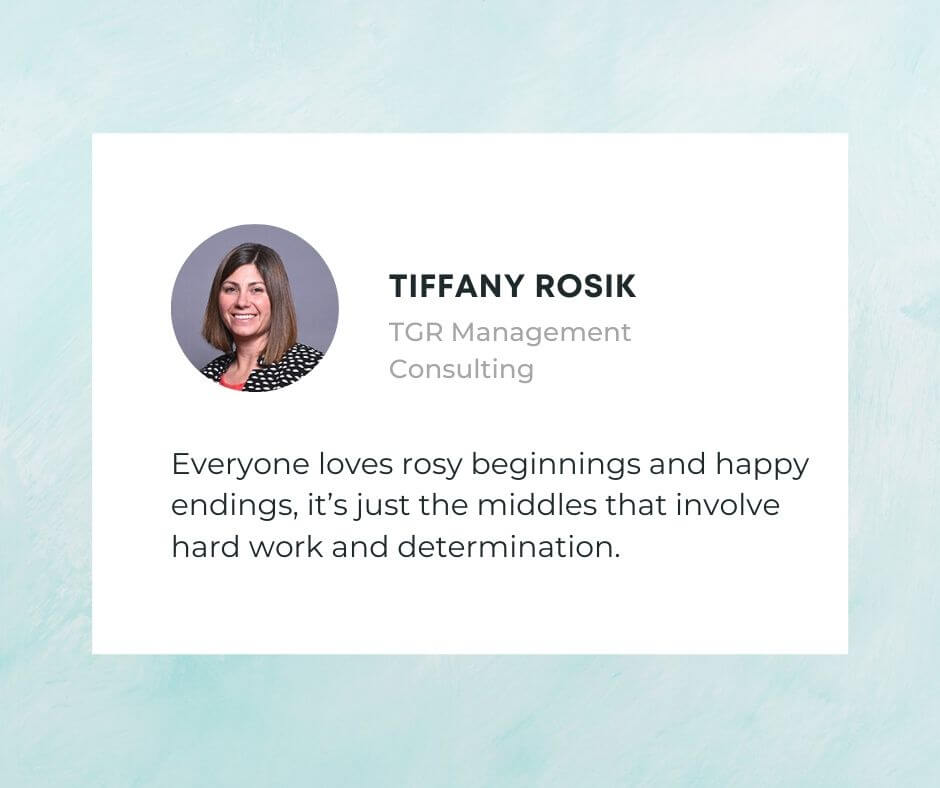Last week, one of my clients invited me back to their office. So, I dusted off my professional business attire, dressed up, drove into the office, and found myself alone in a conference room virtually attending a meeting… As employers start inviting their employees back transitioning from full remote to a hybrid work model, the change can feel awkward as we sit among empty cubicles. the conference room alone. Transitioning to a hybrid model puts us right into the “messy middle” as we navigate the new normal.
As we all try to move forward from the COVID-19 pandemic, employers are facing a complex situation: some workers are willing and able to return to the office, while others are not. Some are concerned with safety, and in some cases, employees have simply seen the immense benefits of choosing where they work. The result? A hybrid model that is here to stay.
A company’s attitude toward hybrid work (a flexible flow of workers reporting from the office or from home) will determine its future success. The US is projected to lead the world by 2022 in out-of-office productivity, with 53% of American employees working remotely. Now is the time to ensure that you and your organization are ready to lead hybrid teams.
What is a Hybrid Team?
It consists of some employees working in the office while others work from home. This delineation can be fluid, with some employees choosing a combination of both in and out-of-office work.
Managing a Hybrid Team
Though there is flexibility on WHERE everyone works, one key is establishing a normalized standard of WHEN your team works.
At the start of the pandemic, there was a precedent set for some employees working at all hours of the day and night, primarily because there was nowhere else to be and people had limited things to do in non-work hours. The return of activities and happy hours and school drop-off/pick-up schedules means that we all will need to define and adjust to work hours and non-work hours.
As your company moves toward a long-term hybrid structure, set expectations for availability that fall within a typical workday in order to avoid frustration and burnout.
Set communication standards for how different team members will be alerted to news and tasks in a remote setting. Though you may not always be able to stop by a co-worker’s physical desk, there are plenty of ways to do so virtually. Beyond day-to-day management, create a plan that addresses productivity, communication, and data security.
Creating a Productive Hybrid Team
Though you might be compelled to consider practical components first, don’t forget that communication and empathy are key.
Understand that this relatively new structure contains both physical and emotional components. While you’re putting a protocol in place, don’t forget that for many people, this shift can be disorienting. Managing perceptions and experiences is as important as determining workflow practices.
Initially, employees may find themselves alone in a conference room on a Zoom call as they adjust to being part of a hybrid team. This is going to be the reality of the hybrid model. It’s temporary and it’s all part of navigating the “messy middle”.
According to Harvard Professor Rosabeth Moss Kanter, she describes that we feel “Everything looks like a failure in the middle.” Kanter’s law describes the “messy middle.” Everyone loves rosy beginnings and happy endings, it’s just the middles that involve hard work and determination. “Recognize the struggle of the middles, give it some time, and a successful end could be in sight.”

Encourage Independence
Frame the hybrid team model as a way to encourage independence, and emphasize that it demonstrates a high level of trust.
Allowing employees to choose where they work gives them a higher quality of life since they can more effectively balance obligations to family, community, and self. At the same time, team building and interconnectivity continue to be important core values.
Technology can allow both independence and connectedness to happen simultaneously.
Use Digital Tools Effectively
Using digital tools effectively can help foster the same productivity as in-office work, while also encouraging relationships between co-workers.
Ensure that you’re using robust cloud-based project management applications and collaboration platforms so that processes stay streamlined. Encourage communication within your team using video conferencing, instant messaging, and audio recording; don’t just rely on email.
Make sure you are fully communicating expectations for use with your team and set standards for when and how they should be regulating work.
Keeping Security in Mind: Secure Company Data
One of the top concerns for a hybrid work model is, of course, data security. When half your employees are accessing information outside the office, there’s a high potential for leaks and malfunctions. In the absence of great cloud-based tools, employees will resort to their own solutions, which can leave your information at risk.
Prioritize training employees to recognize external threats, and ensure that they’re using verified processes and tools. Training should also ensure that employees are thinking digitally. Understand that some people may need a longer “on-ramp” to the hybrid workplace, and take the time to educate them.
Virtual private networks are a solid way to ensure security. Ensure that computers are equipped with the latest malware and anti-virus software and that they’re frequently updated. Prepare employees for the correct actions to take in case of a serious issue. Taking a proactive approach to data breaches means they won’t need to happen, but if they do, your team will be ready.
Building a New Future With Hybrid Teams
Forward-thinking companies embrace innovation and change. While it may start out awkward and feel individual, eventually remote and in-person teams will forge new norms that yield long-term benefits for the employer.
___________
Need Help getting started?
If you need a strategic partner for implementing hybrid teams within your organization, let’s talk.
TGR Management Consulting is a proud woman-owned consulting company, focused on helping companies maximize efficiency, elevate productivity, and amplify profitability. Connect or follow Tiffany Rosik, CEO of TGR Management Consulting on LinkedIn.




